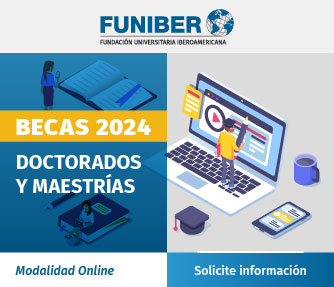Percepción de inclusión educativa y barreras comunicativas desde la experiencia de los estudiantes hipoacúsicos de las instituciones educativas del municipio de Sincelejo - Sucre, Colombia
Publicado Dec 2, 2023
Resumen
Este artículo tiene como objeto de estudio la percepción de inclusión que tienen los estudiantes con discapacidad auditiva o hipoacusia matriculados en el municipio de Sincelejo, Sucre, Colombia, según el Sistema de Matriculas Estudiantil (SIMAT). Teniendo en cuenta el objeto de estudio, el tipo de diseño de la investigación es cualitativa, exploratoria, no experimental. Es un estudio exploratorio, porque examina un tema o problema poco estudiado y pretende aumentar la comprensión del mismo; no experimental, porque los sujetos de estudio (estudiantes hipoacúsicos) ya pertenecían a un grupo identificado, a los cuales se les indagó acerca de la percepción de inclusión en su contexto natural para después analizar su nivel de inclusión, sin llegar a manipular las variables. Por el tipo de investigación mencionado, se decidió diseñar y aplicar técnicas de recolección de datos como entrevistas y cuestionarios de preguntas cerradas tipo LIKERT, así como revisión bibliográfica relacionada con la hipoacusia, la inclusión y la educación en escolares con discapacidad auditiva. Una vez recopilada la información, se realizó un análisis estadístico y se procedió a formular la política de inclusión con sus respectivos actores, indicadores, entre otros. Finalmente, se consolidaron las conclusiones y respectivas recomendaciones para lograr implementar de manera exitosa la política de inclusión educativa.
##plugins.themes.bootstrap3.article.details##
Cómo citar
Descargar Cita
Descargas
Citas
Cotán Fernández, A. (2020). El método etnográfico como construcción de conocimiento: un análisis descriptivo sobre su uso y conceptualización en ciencias sociales. Márgenes, Revista de Educación de la Universidad de Málaga, 1(1), 83-103. https://doi.org/10.24310/mgnmar.v1i1.7241
Elliot, J. (1991). El cambio educativo desde la investigación-acción. Morata. Madrid: España. 184 páginas. http://chamilo.cut.edu.mx:8080/chamilo/courses/PLANEACIONYDISENOCURRICULAR/document/Elliot-El-Cambio-Educativo-Desde-La-IA.pdf
Instituto Nacional Para Sordos (2018). Observatorio Social: Boletín Territorial - información población sorda Sucre-Sincelejo. http://www.insor.gov.co/observatorio/download/boletin_municipal/Sincelejo.pdf
Ley 982 de 2005. Por la cual se establecen normas tendientes a la equiparación de oportunidades para las personas sordas y sordociegas y se dictan otras disposiciones. Diario Oficial de la República de Colombia, Bogotá, D. C. agosto 2 de 2005. https://www.alcaldiabogota.gov.co/sisjur/normas/Norma1.jsp?i=17283
Maturana Moreno, G. A., & Garzón Daza, C. (2015). La etnografía en el ámbito educativo: una alternativa metodológica de investigación al servicio docente. Revista Educación Y Desarrollo Social, 9(2), 192-205. https://doi.org/10.18359/reds.954
Organización Mundial de la Salud (2 de marzo de 2021). Sordera y pérdida de la audición. Datos y cifras. https://www.who.int/es/news-room/fact-sheets/detail/deafness-and-hearing-loss#:~:text=M%C3%A1s%20del%205%25%20de%20la,y%2034%20millones%20de%20ni%C3%B1os)
Sampieri Hernández, R., Fernández Collado, C., & Baptista, M. D. (2010). Metodología de la investigación (quinta edición ed.). México DF: Mc Graw Hill.
Sampieri, R. H. (2018). Metodología de la investigación: las rutas cuantitativa, cualitativa y mixta. McGraw Hill México.
















